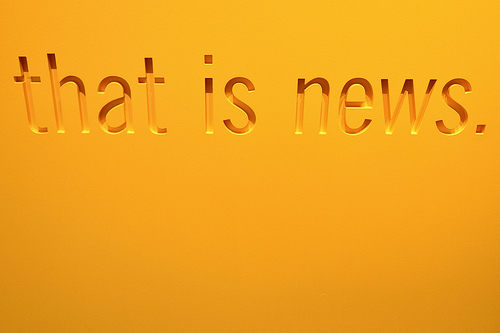When you want to learn about science communication... ASK the science communicator
 This summer, I undertook the beginnings of what is a type of "from the horse's mouth" study of science communicators, their news values, their best practices, and the ways they try to engage their audiences.
This summer, I undertook the beginnings of what is a type of "from the horse's mouth" study of science communicators, their news values, their best practices, and the ways they try to engage their audiences.
The interview portion of the study, which I completed over the summer, was extremely interesting in itself. I interviewed university science public information officers, science book authors, science bloggers and freelance science journalists from within North Carolina (where I was stationed for my summer internship.) I was amazed first of all by the receptivity of most science communicators to my request for an hour long interview – a good chuck of time for busy and deadline-ridden freelance journalists. I interviewed 14 experts in two months, and had many other potential interviewees that I had to turn down, because transcribing 14 interviews is a mighty task for two hands in a single summer.
It was almost as if these science communicators were telling their stories for the first time.
According to my faculty advisor in the LSU Manship School of Mass Communication, it is not uncommon for mass communication and political science professors to get e-mails requests on a daily basis for qualitative interviews and survey participation requests. Apparently, many mass communication scholars and graduate students out there are extensively tapping into the time of traditional journalists and academic professors on questions about teaching practices, message framing, values, routines, you name it – mass communication practices and culture in general.
But within the science communication field, this doesn’t appear to be so common, at least for modern science journalism.
To be fair, there have been surveys and interview studies of science journalists. In 2009, Nature magazine internally conducted a survey of nearly 500 science journalists from around the world. This survey asked science journalists questions about the primary areas they covered, their length of experience in the field, and how often they got their story ideas from various sources including social media and press releases. That survey found a growing trend in science blogging, and that press releases are (still) the “top source of story ideas for science journalists, with 39% routinely quoting from them directly” (Brumfiel 2009). A 1979 survey of science journalists found a similar trend, with 26.4% reportedly consulting university researchers as news sources. I suspect that the more experienced science writers, however, are only referencing the press release before proceeding to read the scientific paper itself. Or so I hope.
Other systematic studies of science writers’ attitudes and values date back to the 1950s – 1970s. Many of these studies primarily look at the demographic profile of science journalists, their work patterns, their training and education, and occasionally their values, perceptions of their audiences and perceptions of their field of work.
For example, in a 1979 published survey of science journalists on metropolitan dailies, 61% of respondents indicated that they spent over 90% of their time on the science beat in general. This survey also found that the science journalists surveyed concentrated their efforts mostly in medical reporting (39%) and environmental and energy reporting (27%). Less time was found devoted to physical sciences (7% average time devoted by responding science journalists).
In a more modern survey of science communicators, Treise and Weigold explored the opinions of science communicators as to “why science communication is often done poorly and how it can be improved.”
But as far as I can tell, there appears to be a lack of research that taps into the experience and practice of modern science journalists and communicators to understand their values, their news judgment, the rules they use for selecting and presenting science news, and what they believe is important to their audiences.
Science and environmental communication research today does a fair amount of self-reflection and self-criticism, musing on and testing messages for their effect on public audiences. But where are the studies that actually go out into the science communication community and ask the people who practice this field what they perceive as important, best practices, do’s and don’ts? Scholarly research on science and environmental communication strategies means nothing if those practicing in these field aren’t involved and asked their opinions on the practicality of these strategies. I think we should be doing more to ask practicing science journalists and bloggers about the norms and routines that might constrain them in implementing communication researchers’ “best” strategies.
